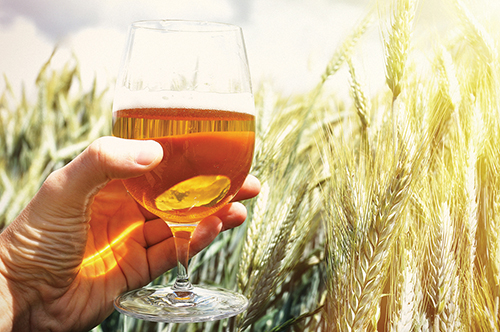
By Jack Kenny
Every craft brewer has to offer an India pale ale, and those that do not will do so sooner or later. Consider Samuel Adams, which waited until 2014 to bring out its Rebel series of IPAs. Even Ommegang, the New York brewer of Belgian style ales, now offers an IPA. These days, though, we tend to overlook a pillar of the beer world, the style that gave birth to the IPA: pale ale.
Some might wonder why it’s called pale, since it is noticeably darker than most of the beer consumed in our country. In England in the early 1700s, when the style emerged, it was considerably more pale than the common beers of the day, such as porter. Beer gets its color from the interaction of barley malt and heat: Roasted grains are dark and produce a dark liquid. Toasted grain, on the other hand, produces a brew of a more amber color.
The term pale ale came into use in the first decade of the 18th Century for beers made from malts that were dried with coke, which produced a beer of a lighter color. (Coke is derived from bituminous coal and has a high carbon content and few impurities.) The brew that the Brits call “bitter” is the same as pale ale.
The high point in the development of pale ale came when brewers in Burton upon Trent, in the center of England, started producing the beer. Notable among these was the Bass brewery (the version we get today is brewed in the U.S.). In the mid-1800s, a charge had been made by a Frenchman that the brewers were achieving bitterness in beer by the addition of strychnine and not hops.
That set off a kerfuffle. Angry brewers threw open their doors for the authorities to examine their operations from top to bottom. Experts came in – strychnine is not to be trifled with, after all – and found no poison anywhere. The event brought attention to Burton ales, and scientists began to study the local water in earnest, finding that it was high in gypsum, a sulfate compound, which enhanced the flavor of the hops. The body of knowledge that followed greatly enriched the science of brewing. By the late 1880s, the city of Burton upon Trent had 31 breweries. The characteristic whiff of sulfur in the nose of the beer came to be known as the “Burton snatch.”
As brewers learned more about “Burtonisation,” as it came to be called, they were able to adjust water so that a style of beer could be brewed in different locations. Science and technology have come so far today that a single brewer in a remote location can produce many or most beer styles regardless of the characteristics of the local H20.
In 1975, Fritz Maytag of Anchor Brewing in San Francisco produced Liberty Ale, a fine American version of a traditional Burton ale. Lighter in color than many pales, it is flavored with Cascade hops, giving it a true U.S. character. Five years later, Sierra Nevada Pale Ale was introduced by a young brewing company in Chico, CA. That delicious beer soon became the standard for the American style of the brew. The rest is history.
Pale ales in the English tradition have several sub-styles: standard or ordinary bitter; special, best or premium bitter; and extra special (ESB) or strong bitter. These vary in aroma and flavor, as well as in the presence of malt and hops.
Beers from other countries are recognized as pale ales. For example, a French bière de garde falls into that category. The style is a farmhouse ale typically brewed in winter and spring, and comes from the northeast part of the nation.
Others include Irish red ale, blonde ale, amber ale, American pale and Scotch ale. The latter has a character of its own, and tends to be darker and sweeter than those brewed to the south, the result of a process called kettle caramelization, during which more sugars are extracted from the grains in the boil.
Author’s note: The story of the Burton Ale strychnine rumor is a complex and fascinating tale. Those who are interested in learning more can read about it on Google Books (http://bit.ly/1Eiq61O). The book, titled Burton and Its Bitter Beer, was published in London in 1853 by J. Stevenson Bushnan, a fellow of the Royal College of Physicians in Edinburgh.
Jack Kenny has been writing The Beer Column for The Connecticut Beverage Journal since 1995. Write to him: thebeercolumn@gmail.com




